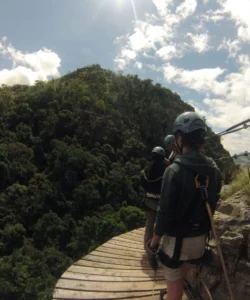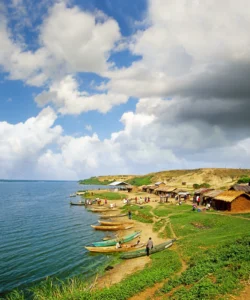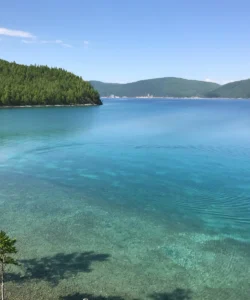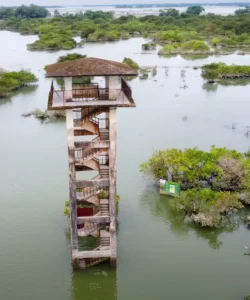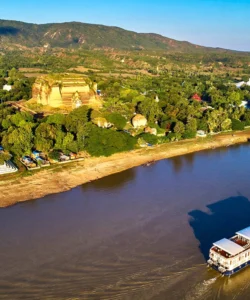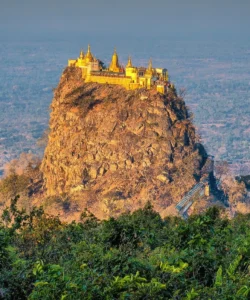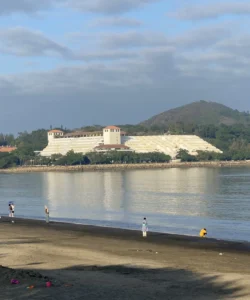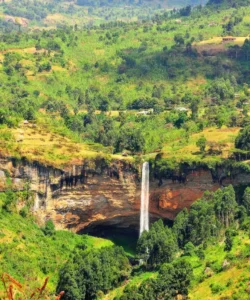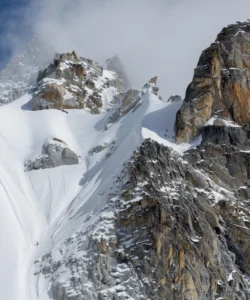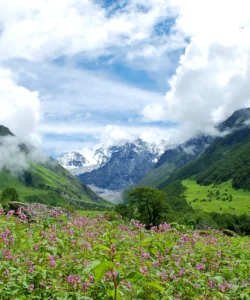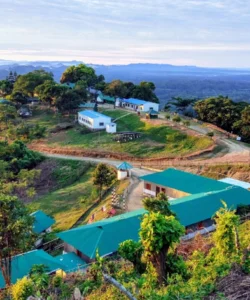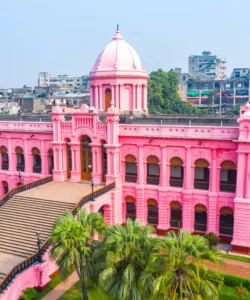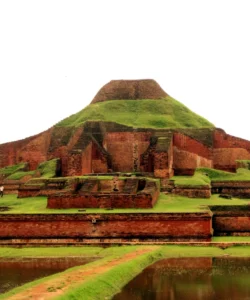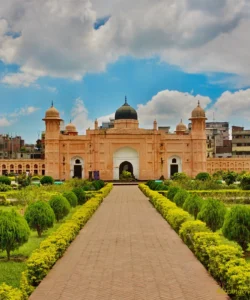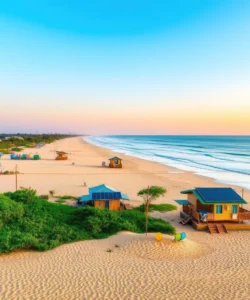The Trango Towers are a breathtaking family of colossal granite rock formations located in the Gilgit-Baltistan region of Pakistan. Part of the Karakoram mountain range, they are globally famous among climbers for offering some of the world’s largest and most challenging big-wall rock climbing routes, standing as a testament to the raw power of geological forces.
Name: Trango Towers (Urdu: ٹرینگو ٹاورز) – The group consists of several distinct spires, most notably Great Trango Tower (the highest, with multiple summits) and Trango Tower (often called “Nameless Tower”). Other prominent peaks include Trango Monk, Trango II, Trango Ri (the highest on the ridge but not usually considered part of the “Towers” group in climbing circles), Trango Pulpit, and Trango Castle.
Address: Shigar District, Gilgit-Baltistan, Pakistan. They are situated on a ridge north of the Baltoro Glacier, within the Baltoro Muztagh sub-range of the Karakoram mountains.
How to Get There:
Accessing the Trango Towers is an expedition-level undertaking, primarily for experienced trekkers and mountaineers. It requires extensive planning, physical fitness, specialized gear, and often involves permits and licensed agencies.
- By Air to Skardu (SKDU): The most common way to begin the journey. Skardu Airport has direct flights from Islamabad, Pakistan’s capital, which is the main international gateway. Flights to Skardu are highly weather-dependent.
- By Road to Skardu: The Karakoram Highway offers a scenic but long and challenging road journey from Islamabad to Skardu.
- From Skardu to Askole: From Skardu, trekkers take a 4×4 jeep to Askole, a remote village at the end of the motorable road, which is the traditional starting point for the trek into the Baltoro region. This drive takes 7-8 hours.
- Trekking to Trango Base Camp: The journey from Askole to Trango Towers Base Camp is a challenging trek (typically 5-7 days) through rugged terrain, including rocky trails and sections of the Baltoro Glacier.
- Permits: A special Mountaineering/Trekking Visa and trekking permit are mandatory for foreigners. These require significant lead time for arrangement through a licensed trekking company in Pakistan.
- Porters: All supplies, equipment, and camping gear are carried by porters.
- Camping: Accommodation throughout the trek is exclusively by camping.
- Best Time to Visit: The climbing and trekking season is short, typically from June to September, when the weather is relatively more stable and warmer, though conditions remain unpredictable.
Landscape and Architecture:
The “architecture” of the Trango Towers is purely natural, a magnificent display of colossal granite spires sculpted by immense geological forces and glacial erosion.
- Granite Spires and Vertical Walls: The defining feature of the Trango Towers is their composition of sheer, towering granite spires. These “towers” rise dramatically, often with near-vertical to overhanging rock faces, making them a unique sight. The east face of Great Trango Tower is particularly famous for having one of the world’s greatest nearly vertical drops. Nameless Tower juts 1,000 meters (3,300 ft) almost vertically out of the ridgeline.
- Glacial Setting: The Towers are rooted in the Baltoro Glacier to their west and the Dunge Glacier to their east. This icy, high-altitude environment, with its moving masses of ice and moraines, creates a stark, rugged, and majestic landscape.
- Concentration of High Peaks: The Trango Towers are situated amidst an incredible concentration of some of the world’s highest mountains. From their vicinity, climbers and trekkers get unparalleled views of K2 (the world’s second-highest mountain), Broad Peak, Gasherbrum IV (the “Shining Wall”), Muztagh Tower, and Mitre Peak, forming a spectacular mountain amphitheater.
- Complex Combinations: The various towers present a complex combination of steep snow/ice gullies, steeper rock faces, and vertical to overhanging headwalls, topped by snowy ridge systems.
- Alpine Desolation: The landscape is characterized by its high-altitude alpine desert environment, with minimal vegetation, dominated by rock, ice, and permanent snowfields.
- No Permanent Human Architecture: There are no permanent human settlements or significant built structures directly on the Towers or in their immediate vicinity beyond temporary expedition base camps and high camps established by climbers. The “architecture” is purely geological.
What Makes It Famous:
- World-Class Big-Wall Climbing: The Trango Towers are globally renowned among elite climbers for offering some of the largest and most technically challenging big-wall rock climbing routes in the world. Their immense vertical faces and perfect golden granite attract top alpinists from across the globe. Routes like “Eternal Flame” on Nameless Tower and “The Grand Voyage” on Great Trango East have achieved legendary status.
- Part of the Karakoram Giants: While not an 8,000-meter peak themselves, their proximity to and dramatic views of K2, Broad Peak, and the Gasherbrum peaks make them an integral part of the “Throne Room of the Mountain Gods” experience (Concordia, a little further on the Baltoro Glacier).
- Iconic Rock Formations: Their unique and dramatic spire-like shapes make them instantly recognizable and exceptionally photogenic, standing out vividly against the backdrop of the Karakoram.
- High-Altitude Technical Climbing: The combination of extreme altitude (many towers above 6,000m / 20,000ft), the sheer verticality of their walls, and the highly technical nature of the climbing routes makes them an ultimate test for alpinists.
- History of Cutting-Edge Ascents: The Trango Towers have been the site of numerous groundbreaking and historically significant ascents, pushing the boundaries of what is possible in alpine rock climbing.
- Extreme Wilderness Trekking: Even reaching their base camp is a challenging multi-day trek through glacial terrain, offering an extreme wilderness experience for those not attempting the technical climbs.
Differences from Some Other Wonders:
- Primary Identity as Rock Spires: Unlike the Himalaya (a vast mountain range) or Mount Everest/K2 (individual highest peaks), the Trango Towers are famous specifically as a group of monumental granite rock spires or towers, renowned for their sheer verticality and technical climbing challenges, rather than their overall elevation or broad mass.
- Focus on Technical Climbing: While other mountains offer trekking (Himalaya, Mount Rinjani, Mount Kinabalu), the Trango Towers’ fame is overwhelmingly centered on extreme, highly technical rock and alpine climbing. It is a Mecca for rock climbers rather than general trekkers.
- Glacial Base: The Towers rise directly from the Baltoro Glacier (or its tributary, the Trango Glacier), giving them a unique setting where the rock faces emerge dramatically from the ice, a distinct visual from peaks that might rise from valleys or lower snowfields.
- “Hardest Big Walls”: The specific claim of having “the hardest big-wall climbs in the world” at such altitudes sets them apart from other famous rock climbing areas (e.g., El Capitan in Yosemite, which is at lower altitude) or other mountain ranges.
- No Permanent Habitation or Cultural Sites: Similar to the Baltoro Glacier itself, the Trango Towers are located in an extremely high-altitude, glaciated wilderness with no permanent human habitation or historical/cultural sites directly on or around them, unlike the culturally rich lower Himalayan regions or ancient civilizations.
- Specific Geological Composition (Granite): Their composition of “perfect golden granite” is a key characteristic that makes them so attractive for rock climbing, distinguishing them from mountains formed by different rock types (e.g., limestone karsts, volcanic basalt).
Trango Towers Photos:






























